When you think of traditional Japanese art, the serene landscapes, intricate designs and deep cultural symbolism are probably the first things that spring to mind. One of the most captivating forms of this art is traditional Japanese tapestry, particularly those that feature landscape scenes. These tapestries are more than just decorative items; they are windows into Japan’s natural beauty and its profound connection with the environment. Let's dive into the world of Japanese tapestry landscape art and explore what makes it so unique and enduring.

Exploring Traditional Japanese Tapestry Landscape Art: A Window into Nature’s Serenity
by HollieT
Explore the rich history and cultural significance of traditional Japanese tapestry landscape art, also known as "nishiki." This article delves into Japanese art symbology
A Brief History of Japanese Tapestry Art
Japanese tapestry art, or "nishiki," as it is more commonly known, has a rich history that dates back to ancient times. The word "nishiki" translates to "brocade," which reflects the intricate weaving techniques used to create these stunning, detailed pieces. The origins of Japanese tapestry can be traced to the Nara period (710-794 AD) when silk weaving techniques were introduced to Japan from neighbouring China. Over the centuries, Japanese artisans refined these techniques, developing their own distinctive styles and motifs which are still popular today.
By the Edo period (1603-1868), tapestry art had become a respected and highly sought-after form of expression. Artisans turned their attention to landscape scenes, drawing inspiration from Japan’s diverse natural environments. These landscapes often depicted mountains, rivers, forests, and rural villages, showcasing the harmony between humans and nature—a theme that resonates deeply in Japanese culture.
The Art of Weaving Japanese Tapestry Landscapes
Creating a traditional Japanese tapestry is a meticulous process that requires patience, lots of skill, an eye for detail and some natural talent. Artisans use a loom to weave together silk threads of various colors, gradually building up a scene that can take months, or even years, to complete. The threads are dyed using natural pigments, which gives the tapestry its rich, vibrant colors that not only stand out but also stand the test of time.
What sets Japanese tapestry landscape art apart form other artistic styles is the way it captures the essence of the scene, rather than just its physical appearance. Unlike Western art, which often focuses on hyper realistic portrayals, Japanese tapestry landscapes are more concerned with evoking the mood and spirit of a place. The use of space, perspective, and color is carefully balanced to create a sense of tranquillity and timelessness. This approach reflects the influence of Zen Buddhism, which emphasizes simplicity, naturalness, and the beauty of imperfection.
A Brief History of Japanese Art
Symbolism in Japanese Tapestry Landscapes
Japanese tapestry landscapes are not just beautiful to look at—they are also rich in mystical symbolism, just as ceremonial and religious symbolism is often present in other forms of folk art. Each element in the scene has a deeper meaning, often related to Shinto and Buddhist beliefs. For example, mountains are seen as sacred places where gods reside, while rivers symbolize the flow of life and the passage of time. Trees, particularly pine and cherry blossom trees, represent longevity and renewal.
The seasons are another important theme in Japanese tapestry art. Many tapestries depict landscapes at different times of the year, from the cherry blossoms of spring to the snow-covered peaks of winter. This emphasis on the changing seasons reflects the Japanese concept of "mono no aware," or the awareness of the impermanence of all things. By capturing these fleeting moments in art, Japanese tapestries serve as a reminder to appreciate the beauty of life as it unfolds and the many gifts of being present in the moment.
The Cultural Significance of Japanese Tapestry Art
Traditional Japanese tapestry landscape art is more than just an aesthetic pursuit; it is deeply embedded in the country’s cultural and spiritual fabric. In ancient times, these tapestries were often used in religious ceremonies or as offerings to temples and shrines. They were also prized possessions of the samurai class, who admired the tapestries for their craftsmanship and symbolic meanings.
In more recent times, Japanese tapestry art continues to be celebrated for its beauty and cultural significance. It's a popular choice for interior decor, particularly in spaces designed to promote calm and relaxation. The timeless appeal of these landscapes makes them a perfect fit for contemporary homes, where they can bring a touch of nature’s serenity indoors.
Collecting and Preserving Japanese Tapestries
For those who appreciate traditional Japanese art, collecting tapestries is a rewarding pursuit. However, it’s important to recognize that these are delicate works of art that require careful handling and preservation. Exposure to light, moisture, and dust can damage the silk threads and fade the colors, so it’s crucial to display and store them in a controlled environment.
When purchasing a Japanese tapestry, it’s advisable to buy from reputable dealers who can provide information about the piece’s provenance and condition. Authenticity is key, as the market for Japanese art includes many reproductions and imitations. A genuine traditional Japanese tapestry is an investment, not just in art but in a piece of cultural heritage that can be passed down through generations.
The Enduring Appeal of Japanese Tapestry Landscape Art
In a world that is constantly changing, traditional Japanese tapestry landscape art offers a moment of stillness and reflection. These intricate weavings capture the beauty of nature in a way that is both timeless and deeply meaningful. Whether you are an art collector, a lover of Japanese culture, or simply someone who appreciates the finer things in life, a Japanese tapestry landscape is a treasure that brings a sense of peace and harmony into any space.
You might also like
A Colorful Journey: Comparing and Contrasting Mexican Folk Art...Beyond the confines of museums and galleries lies a vibrant world that often ...
Maria Moninckx and South Africa's Gasteria nigricans and Pelar...Two botanical illustrations, Gasteria nigricans and Pelargonium oblatum, reve...
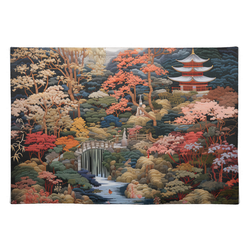

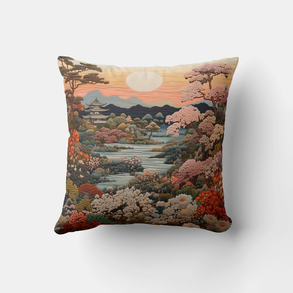
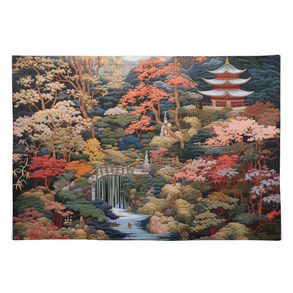
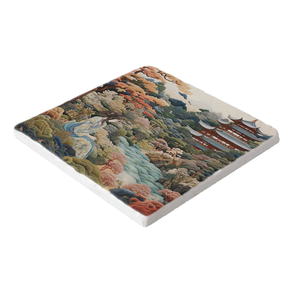
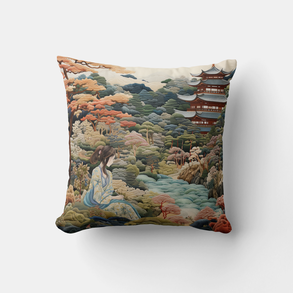

 A Colorful Journey: Comparing and Contrasting Mexican Folk Art With Polish Folk Arton 09/05/2024
A Colorful Journey: Comparing and Contrasting Mexican Folk Art With Polish Folk Arton 09/05/2024
 Are Border Collies Really the Smartest Dog Breed?on 08/20/2024
Are Border Collies Really the Smartest Dog Breed?on 08/20/2024
 A Writer's Guide To Wizzley- A Gem of A Bookon 04/10/2013
A Writer's Guide To Wizzley- A Gem of A Bookon 04/10/2013
 Why Did The British Celebrate Thatcher's Death?on 04/08/2013
Why Did The British Celebrate Thatcher's Death?on 04/08/2013
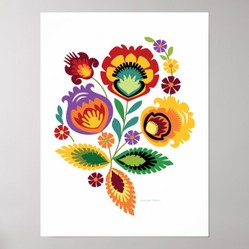
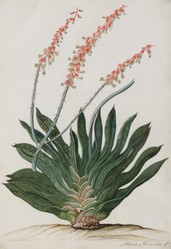
Comments
The first paragraph to the first subheading, A brief history of Japanese tapestry art, advises us that "Japanese tapestry art, or "nishiki," as it is more commonly known, has a rich history that dates back to ancient times. The word "nishiki" translates to "brocade," which reflects the intricate weaving techniques used to create these stunning, detailed pieces. The origins of Japanese tapestry can be traced to the Nara period (710-794 AD) when silk weaving techniques were introduced to Japan from neighbouring China."
Online sources indicate an alternative linen and wool tradition.
Is the product line only of silk tapestries or of linen-, silk-, wool-tapestried landscapes?
(A wool-tapestried landscape pillow is welcome during cold weather and during cold-relapse days in spring weather ;-D)
The first paragraph to the first subheading, A brief history of Japanese tapestry art, advises us that "Japanese tapestry art, or "nishiki," as it is more commonly known, has a rich history that dates back to ancient times. The word "nishiki" translates to "brocade," which reflects the intricate weaving techniques used to create these stunning, detailed pieces. The origins of Japanese tapestry can be traced to the Nara period (710-794 AD) when silk weaving techniques were introduced to Japan from neighbouring China."
Is it known what the original Chinese term is for the afore-indicated tapestry art?
Thank you for your comment below, in answer to my previous observation and question.
That marble weight sounds just about right, not too heavy not to move easily, not too light to move too easily ;-D!
Hi DerdriuMarriner,
That's a good question and the information isn't available in Zazzle's product description, so I did a little digging and found the answer: Japanese art trivet is 0.25lbs. It's fairly light for marble, I was quite surprised
The in-text image for the Japanese-art trivet appeals to me.
The product information through your link describes the length-width dimensions as pleasingly, practically 15.2 by 15.2 centimeters (5.98425197 inches!).
What is its height?
Hi DerdriuMarriner, and thank you!
I think I have one throw but currently the larger tapestries are out of stock with Zazzle but thank you for bringing this up as I haven't checked in a while and had forgotten!
Your product line presents lovely nishiki brocaded functionally and ornamentally.
Nishiki tapestries perhaps, as with European tapestries, protected house beds, doors and walls.
Would there be such a line along with the above-featured products?
Hi Blackspanielgallery, yes it's fascinating. All very Zen like and peaceful, a beautiful reminder to stay in the moment and whatever might be happening in your life, it's fleeting and will pass
I did not realize the symbolism.